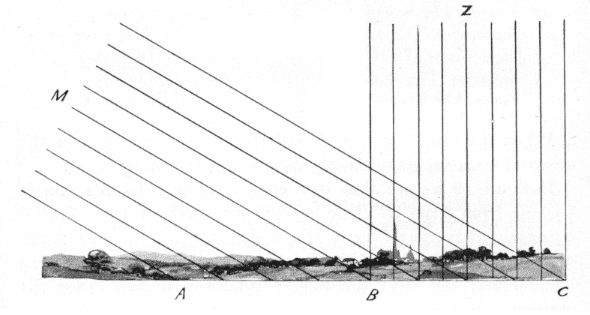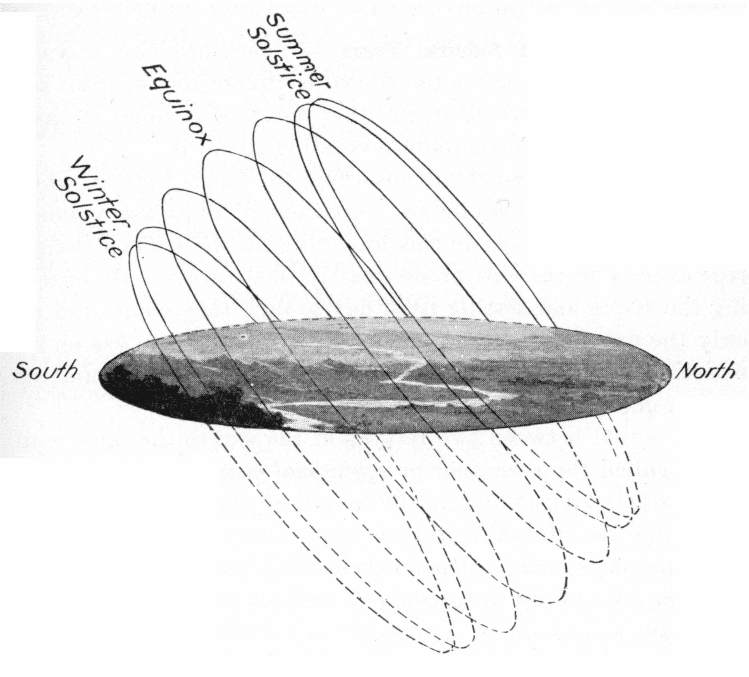5. Seasons in the Two Hemispheres.
The reason that summer is
hotter than winter is that the sun when north of the equator, not only shines
longer upon us every day, but is nearer the zenith at noon. Thus more of its
heat falls on any given surface -- a square mile, for example, as shown in
figure 21.
 |
Fig. 21. -
Showing how a square mile of the earth receives less heat, the
nearer the sun is to the horizon. When the sun is in the zenith, the
region BC receives as many of his rays as the region AC, twice as
large, receives when the altitude of the sun is 30°.
As the sun moves south in declination, its rays fall upon our portion of the
earth at a greater obliquity, so that every square mile of our country receives
less heat day by day.
The greatest amount of heat is received at the time of the summer solstice,
about June 21, and the least at the winter solstice, December 22. But the
highest average temperature does not occur till July. This is because the
sun’s rays require time in order to warm up the air and the surface of the
land and sea, much as it takes time for a fire to warm up a room. The lowest
temperature does not occur till January, because earth, air, and ocean retain
for some time the heat radiated to them during the preceding months.
But in the southern hemisphere the seasons are reversed. When the sun is in
south declination, as at the winter solstice, the southern hemisphere has the
longest days and the shortest nights. Hence, during our winter in the northern
hemisphere, the southern hemisphere has its summer, and it has its winter
during our summer.
 |
Fig. 22. --
Showing the apparent diurnal course of the sun, as we see it in
our latitudes at different times of the year. You must fancy yourself
standing in the center of the landscape. Then in summer you will
see the sun rise considerably north of east, pass not far south of
the zenith at noon, and set to the north of west, as shown in the
right hand circle of the figure. During the night it is completing that
part of the circle which is below the horizon. During the remaining
months of the year it seems to pass, day by day, farther and farther
toward the south until December, when it seems to describe the left
hand circle. It then rises south of east and sets south of west. We
see that at this time the greater part of the circle is below the horizon,
while in June the greater part is above the horizon.
We know that on a general average the hottest climates are within the tropics,
and that the temperature is lower toward either pole. This is because the
obliquity of the sun's rays increases toward the poles. At the poles the sun
shines only half the year, and then is never more than 23½° above the
horizon.
NEXT
INDEX


